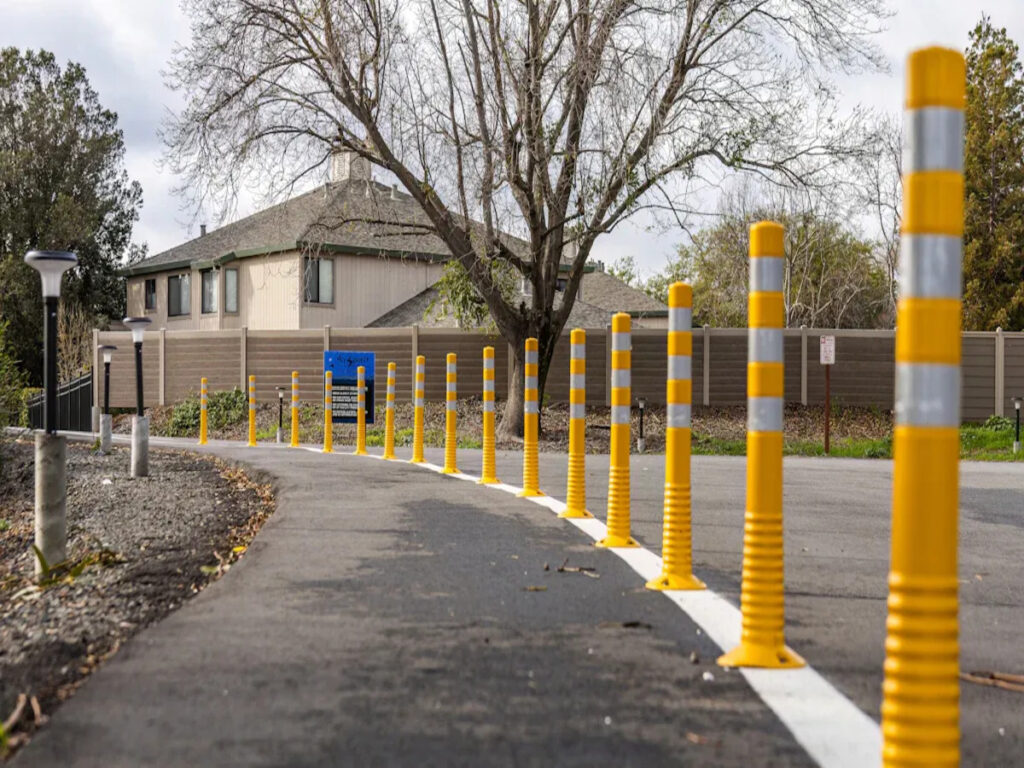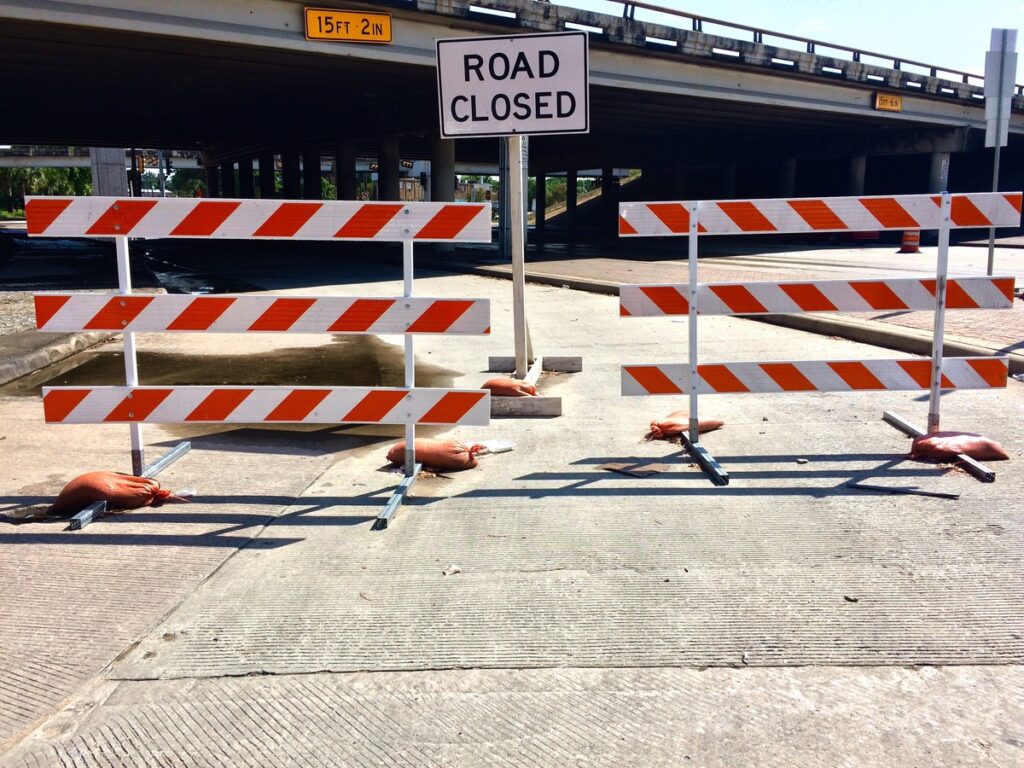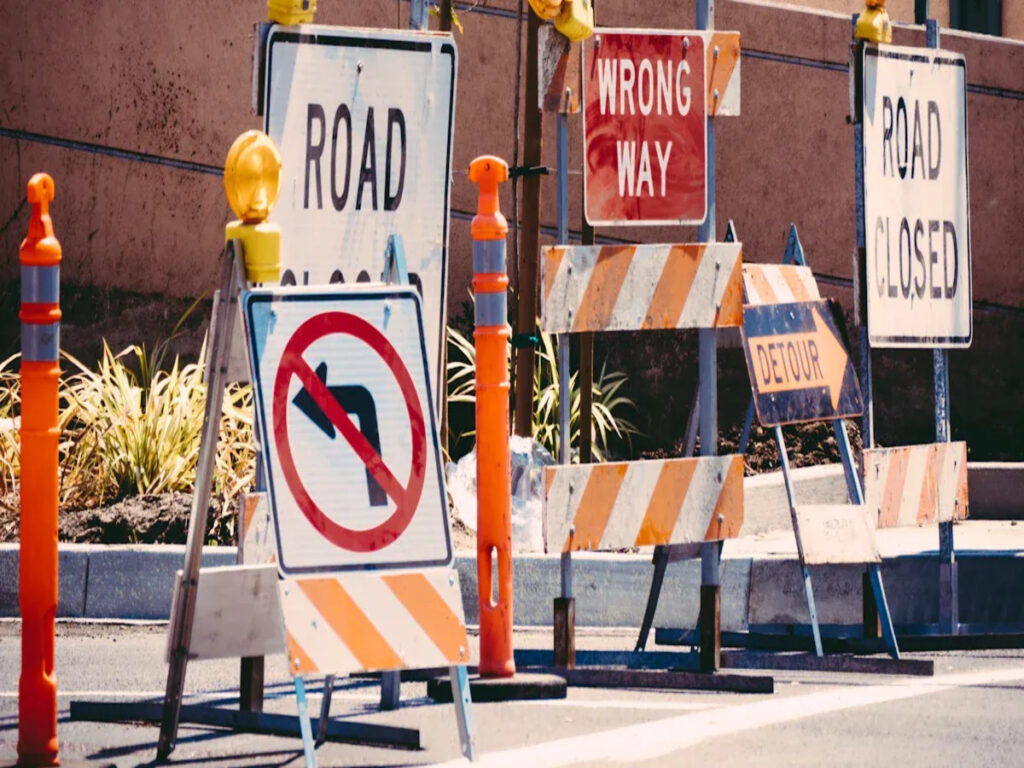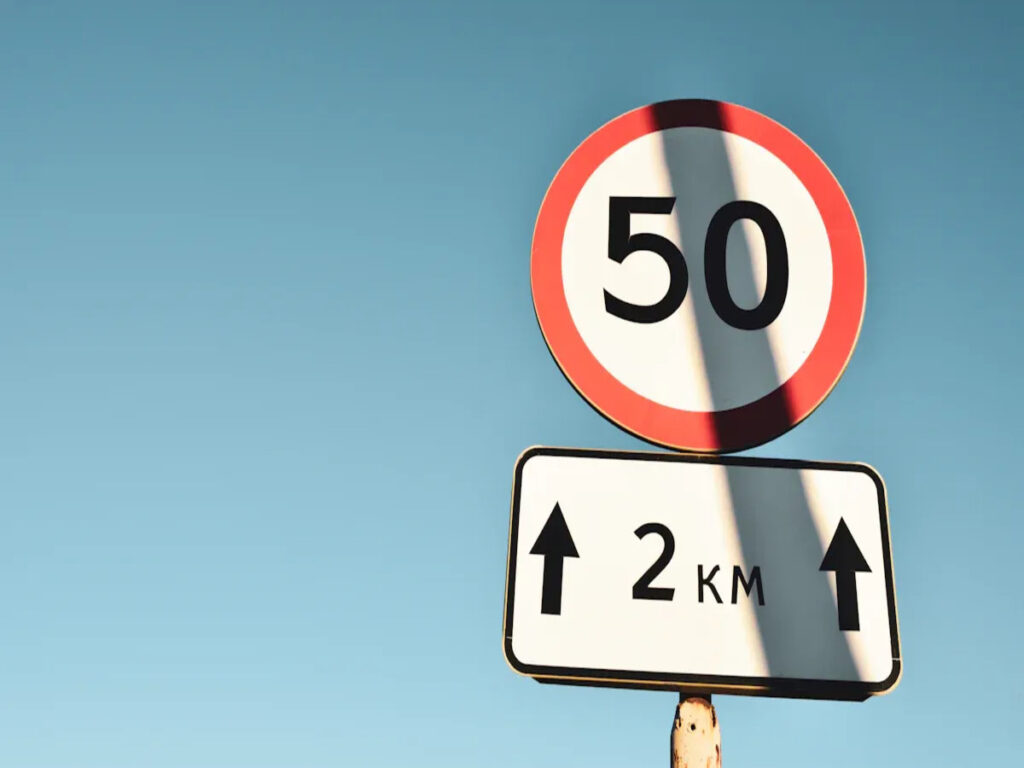
ब्रिटिश रोड सेफ्टी साइनेज ने प्रभावित किया है कि विश्व स्तर पर सड़क के नियमों का संचार कैसे किया जाता है. स्पष्ट, संकेतों पर सरल संदेश ड्राइवर और पैदल यात्रियों दोनों को जल्दी करने में मदद करते हैं, सुरक्षित निर्णय. यह स्पष्टता दुर्घटनाओं को कम करने और समग्र सड़क सुरक्षा में सुधार करने में महत्वपूर्ण भूमिका निभाती है.
इन ट्रैफ़िक संकेतों की प्रभावशीलता मजबूत डिजाइन के संयोजन से आती है, स्पष्ट कानूनी समर्थन, और सांस्कृतिक जागरूकता. ब्रिटिश दृष्टिकोण से पता चलता है कि सादे भाषा और बोल्ड ग्राफिक्स का उपयोग कैसे सभी के लिए सुरक्षित सड़कें बना सकते हैं.
यह देखने के लिए कि आधुनिक सड़क सुरक्षा समाधानों में यह सिद्धांत कैसे लागू होता है, अधिक अंतर्दृष्टि के लिए optraffic पर जाएं यातायात संकेत नवाचार.
यूके रोड साइन्स का इतिहास
प्रारंभिक विकास
शुरुआती दिनों में, ब्रिटेन में सड़क के संकेत आज के यातायात संकेतों से बहुत अलग लग रहे थे. लोगों ने शब्दों या बुनियादी प्रतीकों के साथ सरल बोर्ड देखे. ये संकेत अक्सर ड्राइवरों को भ्रमित करते हैं. कई सड़क संकेतों ने बहुत सारे शब्दों या अस्पष्ट चित्रों का उपयोग किया. ड्राइवर कभी -कभी स्टॉप या उपज जैसे महत्वपूर्ण संदेशों को याद करते हैं. देश के पास एक-तरफ़ा या स्पीड लिमिट साइन जानकारी दिखाने का एक मानक तरीका नहीं था. प्रत्येक शहर अपनी शैली का उपयोग कर सकता है. इसने यात्रा को कठिन और कम सुरक्षित बना दिया.
Kinneir और Calvert का प्रभाव
1960 के दशक में, जॉक किन्नीर और मार्गरेट कैलवर्ट लोगों ने ब्रिटेन के सड़क के संकेतों को देखा जिस तरह से बदल गया. उन्होंने ट्रैफ़िक संकेतों के लिए नए डिजाइन बनाए जो स्पष्टता और सुरक्षा पर केंद्रित थे. उन्होंने पेश किया परिवहन मध्यम और भारी अक्षर. इन अक्षर लोगों को संकेतों को जल्दी से पढ़ने में मदद करने के लिए अलग -अलग पृष्ठभूमि रंगों का मिलान किया. Kinneir और Calvert भी पत्र टाइलों के साथ एक विशेष रिक्ति प्रणाली का उपयोग किया. यह सुनिश्चित करता है कि हर ट्रैफ़िक साइन समान दिखे और पढ़ना आसान था. उन्होंने सबसे अच्छे विकल्प खोजने के लिए कई अक्षर और लेआउट का परीक्षण किया. उनके काम ने बेहतर सुगमता पैदा की और ड्राइवरों को स्पॉट करने और तेजी से संकेत देने में मदद की. हालांकि कोई सटीक संख्या सुरक्षा सुधार नहीं दिखाती है, विशेषज्ञ इस बात से सहमत हैं कि इन परिवर्तनों ने यूके रोड के संकेतों को स्पष्ट और अधिक उपयोगी बना दिया.
आधुनिकीकरण और स्थिरता
किन्नीर और कैलवर्ट के काम के बाद, सरकार ने सुनिश्चित किया कि सभी सड़क संकेतों ने समान नियमों का पालन किया. हर ट्रैफ़िक साइन ने एक ही रंग का इस्तेमाल किया, आकार, और प्रतीक. उदाहरण के लिए, बंद करो और उपज के संकेत हमेशा देश भर में समान दिखते थे. एक-तरफ़ा संकेतों ने स्पष्ट तीर और सरल शब्दों का उपयोग किया. इस संगति ने ड्राइवरों को नए स्थानों पर भी ट्रैफ़िक संकेतों को समझने में मदद की. प्रतीकों का उपयोग बढ़ता गया, नियमों का पालन करने के लिए अंग्रेजी नहीं बोलने वालों के लिए यह आसान है. आज, यूके रोड के संकेत स्पष्टता और सुरक्षा के लिए एक उच्च मानक निर्धारित करते हैं. लोग उन्हें मार्गदर्शन करने के लिए इन ट्रैफ़िक संकेतों पर भरोसा करते हैं, चाहे वे एक स्टॉप देखते हैं, उपज, या एक-तरफ़ा चिन्ह.
टिप्पणी: ट्रैफ़िक संकेतों में लगातार डिजाइन और स्पष्ट भाषा हर किसी को सड़क पर सुरक्षित रहने में मदद करती है.
सड़क सुरक्षा साइनेज मानकों

कानूनी ढांचे
यूनाइटेड किंगडम के पास सड़क सुरक्षा साइनेज के लिए बहुत सख्त नियम हैं. हर ट्रैफ़िक साइन का पालन करना चाहिए यातायात संकेत विनियम और सामान्य दिशाएँ (TSRGD). यह कानूनी दस्तावेज सभी अनुमोदित ट्रैफ़िक संकेतों को सूचीबद्ध करता है. यह भी बताता है कि प्रत्येक चिन्ह का उपयोग कैसे किया जाना चाहिए. नए संकेतों को डालते समय स्थानीय परिषदों को इन नियमों का पालन करना चाहिए. कानून शामिल है, उपज, और चेतावनी संकेत. इसमें नियामक संकेत और अनिवार्य निर्देश भी शामिल हैं. ये नियम देश में सड़क सुरक्षा को उच्च रखने में मदद करते हैं.
टिप्पणी: कानूनी रूपरेखा सुनिश्चित करें कि प्रत्येक ट्रैफ़िक साइन समान दिखता है और स्पष्ट जानकारी देता है. यह ड्राइवरों को साइनेज पर भरोसा करने और नियमों का पालन करने में मदद करता है.
डिज़ाइन सिद्धांत
अच्छा डिजाइन लोगों को सड़क सुरक्षा साइनेज को आसानी से समझने में मदद करता है. डिजाइनर आकृतियों का उपयोग करते हैं, रंग, और लोगों को संकेतों को जल्दी से हाजिर करने में मदद करने के लिए प्रतीक. उदाहरण के लिए, स्टॉप साइन्स हमेशा लाल ऑक्टागन होते हैं. उपज संकेत लाल त्रिकोण हैं. चेतावनी के संकेतों में अक्सर काले प्रतीकों के साथ पीले या लाल पृष्ठभूमि होती है. अनिवार्य निर्देश सफेद प्रतीकों के साथ नीले घेरे का उपयोग करते हैं. ये विकल्प ड्राइवरों को यह जानने में मदद करते हैं कि क्या करना है, भले ही वे शब्दों को नहीं पढ़ते हैं.
नीचे एक तालिका सामान्य आकार और उनके अर्थ दिखाती है:
| आकार | अर्थ | उदाहरण |
|---|---|---|
| अष्टकोना | रुकना | रोकने का चिन्ह |
| त्रिकोण | उपज/चेतावनी | रास्ता दें निशान |
| घेरा | अनिवार्य निर्देश | बाएं साइन टर्न करें |
| आयत | जानकारी | गति सीमा |
डिजाइनर बड़े अक्षरों और सरल शब्दों का उपयोग करते हैं. यह लोगों को दूर से संकेत पढ़ने में मदद करता है. प्रतीक सभी को संदेश को समझने में मदद करते हैं. यूके में रोड साइनेज सड़कों को सुरक्षित रखने के लिए इन डिजाइन नियमों का उपयोग करता है.
स्पष्टता और सादगी
सड़क सुरक्षा के लिए स्पष्टता और सादगी बहुत महत्वपूर्ण हैं. ट्रैफ़िक संकेतों को स्पष्ट संदेश देना होगा. वे स्टॉप जैसे छोटे शब्दों का उपयोग करते हैं, उपज, या कोई प्रविष्टि नहीं. डिजाइनर लंबे वाक्यों का उपयोग नहीं करते हैं. यह ड्राइवरों को त्वरित विकल्प बनाने में मदद करता है. सड़क सुरक्षा साइनेज कार्यों को दिखाने के लिए प्रतीकों का उपयोग करता है, दिशा के लिए तीर की तरह या पैदल यात्री क्रॉसिंग के लिए लोग.
ट्रैफ़िक संकेतों को ड्राइवरों को भ्रमित नहीं करना चाहिए. प्रत्येक संकेत केवल एक संदेश देता है. उदाहरण के लिए, एक स्टॉप साइन ड्राइवरों को रोकने के लिए कहता है. एक उपज चिन्ह उन्हें रास्ता देने के लिए कहता है. अनिवार्य निर्देश ड्राइवरों को बताते हैं कि उन्हें क्या करना चाहिए, जैसे बाएं मुड़ें या दाएं रखें. ये स्पष्ट संदेश दुर्घटनाओं को रोकने और सभी को सुरक्षित रखने में मदद करते हैं.
बख्शीश: सरल और स्पष्ट साइनेज जीवन बचाता है. जब वे एक नज़र में ट्रैफ़िक संकेतों को समझते हैं तो ड्राइवर तेजी से प्रतिक्रिया कर सकते हैं.
ब्रिटेन में सड़क सुरक्षा साइनेज अन्य देशों के लिए एक अच्छा उदाहरण है. स्पष्टता पर ध्यान केंद्रित, डिज़ाइन, और कानूनी नियम सड़क सुरक्षा मानकों को ऊंचा रखते हैं. लोग हर दिन सुरक्षित रूप से मार्गदर्शन करने के लिए इन ट्रैफ़िक संकेतों पर भरोसा करते हैं.
सांस्कृतिक और भाषाई प्रभाव
द्विभाषी और क्षेत्रीय संकेत
संस्कृति और भाषा बदलती है कि सड़क सुरक्षा साइनेज कैसे दिखता है. यूनाइटेड किंगडम में, कुछ संकेत दो भाषाओं का उपयोग करते हैं. वेल्स के वेल्श और अंग्रेजी दोनों में संकेत हैं. स्कॉटलैंड के कुछ हिस्से अपने संकेतों पर गेलिक का उपयोग करते हैं. ये संकेत कई पृष्ठभूमि के लोगों को नियमों को समझने में मदद करते हैं. मजबूत पहचान वाले स्थानीय क्षेत्रों में अलग -अलग शब्द या डिजाइन हो सकते हैं.
एक अध्ययन ने चीनी-अंग्रेजी द्विभाषी राजमार्ग गाइड संकेतों का परीक्षण करने के लिए एक ड्राइविंग सिम्युलेटर और आंख-ट्रैकिंग का उपयोग किया. ड्राइवरों ने पांच या उससे कम जगह के नामों के साथ सबसे अच्छा संकेत समझे. अगर पांच से अधिक नाम थे, ड्राइवरों को परेशानी थी. अंग्रेजी में छोटे फोंट और गलतियों ने कम सहायक बनाया. इससे पता चलता है कि स्पष्ट द्विभाषी और क्षेत्रीय संकेत महत्वपूर्ण हैं. अच्छे बहुभाषी संकेत लोगों को समझने और सड़कों को सुरक्षित रखने में मदद करते हैं.
कुछ स्थान स्थानीय परंपराओं को दिखाने के लिए विशेष रंगों या प्रतीकों का उपयोग करते हैं. ये सांस्कृतिक स्पर्श लोगों को अपने क्षेत्र पर गर्व महसूस करने में मदद करते हैं. वे यह भी सुनिश्चित करते हैं कि हर कोई नियम जानता है. फिट भाषा और संस्कृति के लिए सड़क सुरक्षा साइनेज परिवर्तन. यह सभी यात्रियों को सुरक्षित रखने में मदद करता है.
सड़क सुरक्षा में नरम भाषा
नरम भाषा बदलती है कि ड्राइवर सड़क सुरक्षा संदेशों पर कैसे प्रतिक्रिया देते हैं. ब्रिटिश संकेत कठोर शब्दों का उपयोग नहीं करते हैं. वे विनम्र वाक्यांशों का उपयोग करते हैं जैसे "कृपया सावधानी से ड्राइव करें" या "सावधानी: बच्चे पार कर रहे हैं। ” यह अनुकूल स्वर लोगों को एक साथ काम करने में मदद करता है.
अनुसंधान से पता चलता है कि नरम भाषा ड्राइवर बेहतर व्यवहार करती है. नीचे दी गई तालिका से पता चलता है कि क्या अध्ययन मिला:
| अनुसंधान पहलू | प्रमुख निष्कर्ष | चालक व्यवहार और सड़क सुरक्षा पर प्रभाव |
|---|---|---|
| पीएमटी घटकों का उपयोग (गंभीरता, भेद्यता, आत्म प्रभावकारिता, प्रतिक्रिया प्रभावकारिता) | मानक क्रैश सांख्यिकी संदेशों से अधिक प्रभावी, विशेष रूप से महिलाओं के लिए | गति सीमाओं का पालन करने के इरादे में वृद्धि हुई |
| धमकी देना | संदेशों की तुलना में कम प्रभावी व्यवहार को बदलने की क्षमता पर जोर देते हैं | चालक अनुपालन पर कम प्रभाव |
| सूचनात्मक संदेश (लिंग क्लोजर, घटनाएं) | ड्राइविंग व्यवहार पर सबसे बड़ा प्रभाव | सड़क की स्थिति में बेहतर चालक प्रतिक्रिया |
| संदेशों में भावनात्मक सामग्री | सकारात्मक संदेश नकारात्मक या परिणाम-आधारित संदेशों की तुलना में अधिक बार याद किए जाते हैं | सकारात्मक भावनात्मक फ्रेमिंग संदेश को याद करता है और स्व-रिपोर्ट किए गए व्यवहार परिवर्तन को बढ़ाता है |
| सेल फोन संदेशों का उपयोग करें | उच्च प्रदर्शन के बावजूद उच्च याद | ड्राइवर जागरूकता और व्यवहार पर मजबूत प्रभाव |
क्षेत्र परीक्षण और सर्वेक्षणों ने पाया कि सकारात्मक, सरल संदेशों ने ड्राइवरों को संकेतों को समझने में मदद की. ड्राइवरों ने कारों के बीच अधिक जगह छोड़ दी और काम क्षेत्रों में टेलगेट नहीं किया. ये परिणाम बताते हैं कि संकेतों में नरम भाषा लोगों को सुरक्षित रूप से चलाने में मदद करती है. यह ड्राइवरों को भ्रमित या तनाव नहीं देता है.
मनोवैज्ञानिक प्रभाव
संस्कृति और भाषा प्रभावित करती हैं कि लोग सड़कों पर कैसा महसूस करते हैं और कैसे कार्य करते हैं. बहुभाषी और क्षेत्रीय संकेत ड्राइवरों को स्वागत और सम्मान महसूस करने में मदद करते हैं. जब लोग अपनी भाषा या स्थानीय प्रतीकों को देखते हैं, वे अधिक ध्यान देते हैं. यह विश्वास उन्हें नियमों का पालन करता है.
भाषा के अंतर बदल सकते हैं कि ड्राइवर कितनी तेजी से प्रतिक्रिया करते हैं. एक ज्ञात भाषा में सरल शब्द लोगों को जल्दी से तय करने में मदद करते हैं. बहुभाषी संकेत भ्रम को रोकते हैं और उन आगंतुकों की मदद करते हैं जो मुख्य भाषा नहीं जानते हैं. स्थानीय डिजाइन और शब्द समुदायों को शामिल महसूस करने में मदद करते हैं.
संस्कृति आकार कैसे लोग सड़क सुरक्षा संदेश देखते हैं. दोस्ताना, नरम शब्द कम तनाव और ड्राइवरों को सुनते हैं. सकारात्मक संदेश लोगों को याद रखने और बदलने में मदद करते हैं कि वे कैसे कार्य करते हैं. बहुभाषी और स्थानीय संकेत सभी की जरूरतों का सम्मान करके सड़कों को सुरक्षित बनाते हैं.
बख्शीश: स्थानीय संस्कृति का उपयोग करने पर सड़क सुरक्षा साइनेज सबसे अच्छा काम करता है, नरम भाषा, और सोचता है कि ड्राइवर कैसा महसूस करते हैं.
यूके रोड साइन्स का अंतर्राष्ट्रीय प्रभाव
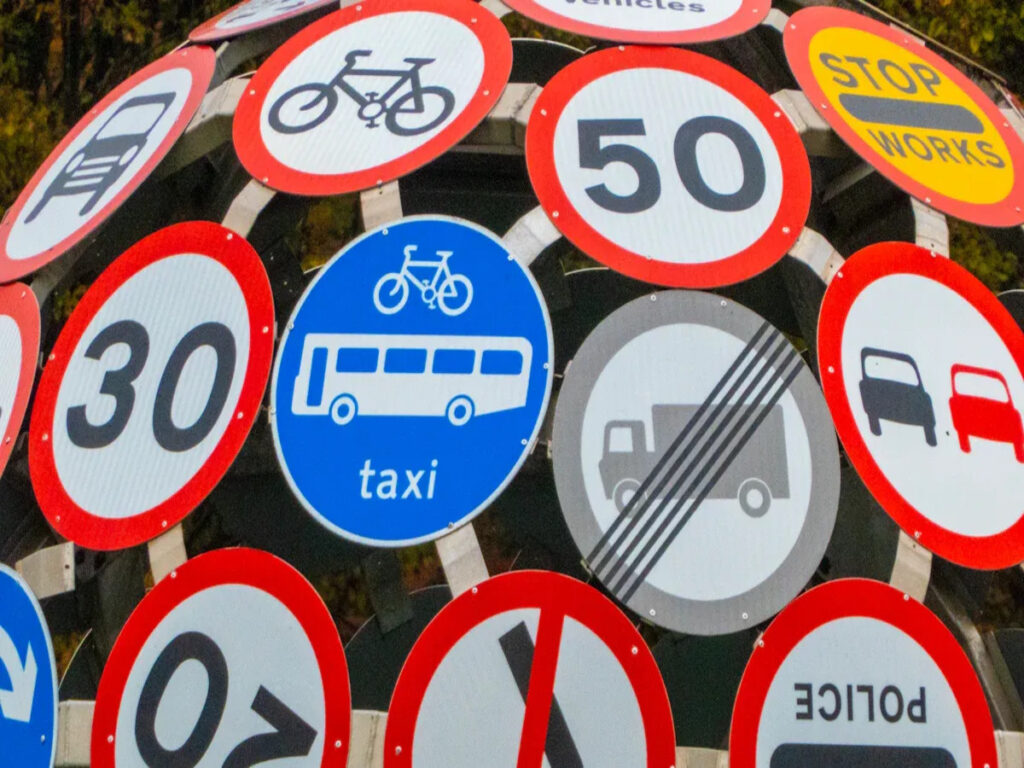
अन्य देशों में गोद लेना
कई देश ब्रिटिश यातायात संकेतों का उपयोग करते हैं क्योंकि वे समझने में आसान हैं. ऑस्ट्रेलिया जैसे राष्ट्रमंडल राष्ट्र, भारत, और दक्षिण अफ्रीका के समान संकेत हैं. इन देशों को सरल आकार और चमकीले रंग पसंद हैं. वे खतरों के लिए एक ही चेतावनी संकेतों का भी उपयोग करते हैं. ब्रिटिश सड़क के संकेत प्रभावित करते हैं कि ये देश अपनी भाषाओं और रीति -रिवाजों के लिए कैसे संकेत बदलते हैं. कुछ स्थान विशेष प्रतीकों या स्थानीय शब्दों को जोड़ते हैं ताकि संकेत परिचित हो. ये परिवर्तन ड्राइवरों को सुरक्षित और घर पर महसूस करने में मदद करते हैं. ब्रिटिश यातायात संकेतों के प्रसार से पता चलता है कि संस्कृति सड़क सुरक्षा को कैसे आकार देती है.
अन्य प्रणालियों के साथ तुलना
ब्रिटिश यातायात संकेत अमेरिकी या यूरोपीय लोगों के समान नहीं हैं. ब्रिटेन में, संकेत स्पष्ट चित्रों और छोटे शब्दों का उपयोग करते हैं. अमेरिकी संकेतों में अक्सर अधिक शब्द और अलग -अलग प्रतीक होते हैं. यूरोपीय देश अधिक चित्रों और कभी -कभी अन्य रंगों का उपयोग करते हैं. यूके सिस्टम विशेष है क्योंकि यह स्पष्ट संकेतों और आसान चेतावनी संदेशों का उपयोग करता है. ब्रिटिश सड़क के संकेत आकार या रंग में ज्यादा नहीं बदलते हैं. यह ड्राइवरों को यह जानने में मदद करता है कि संकेतों का क्या मतलब है. ब्रिटेन के संकेत बनाने का तरीका समझना आसान है और दूसरों से बाहर खड़ा है.
| प्रणाली | प्रतीक | शब्द | सांस्कृतिक विशेषताएं | बदलाव |
|---|---|---|---|---|
| यूके | स्पष्ट | कुछ | मज़बूत | कुछ |
| यूएसए | मिश्रित | अनेक | मध्यम | अधिक |
| यूरोप | अनेक | कुछ | क्षेत्रीय | कुछ |
प्रभावशीलता और सार्वजनिक प्रतिक्रिया
लोग ब्रिटिश यातायात संकेतों पर भरोसा करते हैं क्योंकि वे सरल और स्पष्ट हैं. अध्ययन से पता चलता है कि ड्राइवर उन संकेतों के साथ बेहतर करते हैं जो उनकी संस्कृति से मेल खाते हैं. परिचित प्रतीकों और स्थानीय शब्दों का उपयोग करना सड़कों को सुरक्षित बनाता है. ब्रिटिश-शैली के संकेतों वाले स्थानों में ड्राइवर कम गलतियाँ करते हैं. इन संकेतों के सांस्कृतिक भाग कई पृष्ठभूमि के लोगों की मदद करते हैं. जैसे परिवर्तन द्विभाषी संकेत या स्थानीय प्रतीक सभी को समझने में मदद करते हैं. विशेष टच के साथ चेतावनी के संकेत ड्राइवरों को अधिक ध्यान देते हैं. लोग ब्रिटिश यातायात को पसंद करते हैं क्योंकि वे संस्कृतियों का सम्मान करते हैं और भ्रम को रोकते हैं.
टिप्पणी: ट्रैफ़िक संकेतों में संस्कृति और सावधानीपूर्वक बदलाव सभी को सड़क पर सुरक्षित रखने में मदद करते हैं.
ब्रिटिश सड़क सुरक्षा साइनेज अभी भी बदलता है कि अन्य देश कैसे संकेत बनाते हैं. कई स्थानों पर डिजाइनर देखते हैं कि संस्कृति महत्वपूर्ण है. वे देखते हैं कि प्रतीक और भाषा लोगों को नियमों को जानने में मदद करते हैं. स्थानीय संस्कृति के लिए संकेत बदलना संदेश स्पष्ट करता है. अलग -अलग संस्कृतियां उन शब्दों और चित्रों को चुनती हैं जो अपने लोगों को फिट करते हैं. संस्कृति के लिए सम्मान ड्राइवरों को सड़क के संकेतों और एक दूसरे पर भरोसा करने में मदद करता है. संस्कृति के बारे में जानना सभी के लिए ड्राइविंग बेहतर बनाता है. यूके रोड के संकेत बताते हैं कि समझ संस्कृति सड़कों को सुरक्षित रखती है. ये संकेत हर यात्रा पर सबसे महत्वपूर्ण चीज के रूप में सुरक्षा रखते हैं.
अक्सर पूछे जाने वाले प्रश्न
ब्रिटिश सड़क सुरक्षा संकेतों को समझने में आसान क्या है?
ब्रिटिश सड़क सुरक्षा संकेत स्पष्ट शब्दों और सरल प्रतीकों का उपयोग करते हैं. डिजाइनर चमकीले रंग और आसान आकार चुनते हैं. ड्राइवर संदेशों को जल्दी से देख सकते हैं. यह सड़क पर सभी को सुरक्षित रखने में मदद करता है.
कुछ यूके रोड साइन दो भाषाओं का उपयोग क्यों करते हैं?
ब्रिटेन में कुछ स्थानों में ऐसे लोग हैं जो अलग -अलग भाषाएँ बोलते हैं. उदाहरण के लिए, वेल्स वेल्श और अंग्रेजी दोनों का उपयोग करता है. द्विभाषी संकेत सभी को नियमों को जानने और शामिल महसूस करने में मदद करते हैं.
ब्रिटिश सड़क के संकेत अमेरिकी संकेतों से कैसे भिन्न होते हैं?
ब्रिटिश संकेत कम शब्दों और अधिक प्रतीकों का उपयोग करते हैं. आकृतियाँ और रंग देश में हर जगह समान रहते हैं. अमेरिकी संकेतों में अक्सर अधिक शब्द और अलग -अलग डिजाइन होते हैं. यह ब्रिटिश संकेतों को जल्दी से हाजिर करना आसान बनाता है.
संकेतों पर विनम्र संदेश वास्तव में ड्राइवर व्यवहार को बदलते हैं?
अध्ययन से पता चलता है कि विनम्र संदेश, जैसे “कृपया ध्यान से ड्राइव करें,“ड्राइवरों को शांत रहने में मदद करें. ड्राइवर दोस्ताना अनुस्मारक के लिए बेहतर सुनते हैं. इससे सुरक्षित सड़कें और कम दुर्घटनाएँ होती हैं.
कौन से देश ब्रिटिश शैली के सड़क के संकेतों का उपयोग करते हैं?
कई राष्ट्रमंडल देश, ऑस्ट्रेलिया की तरह, भारत, और दक्षिण अफ्रीका, ब्रिटिश-शैली के संकेतों का उपयोग करें. ये देश अपनी भाषाओं और रीति -रिवाजों के संकेतों को बदलते हैं. मुख्य भाग, प्रतीकों और रंगों की तरह, ऐसे ही रहना.



